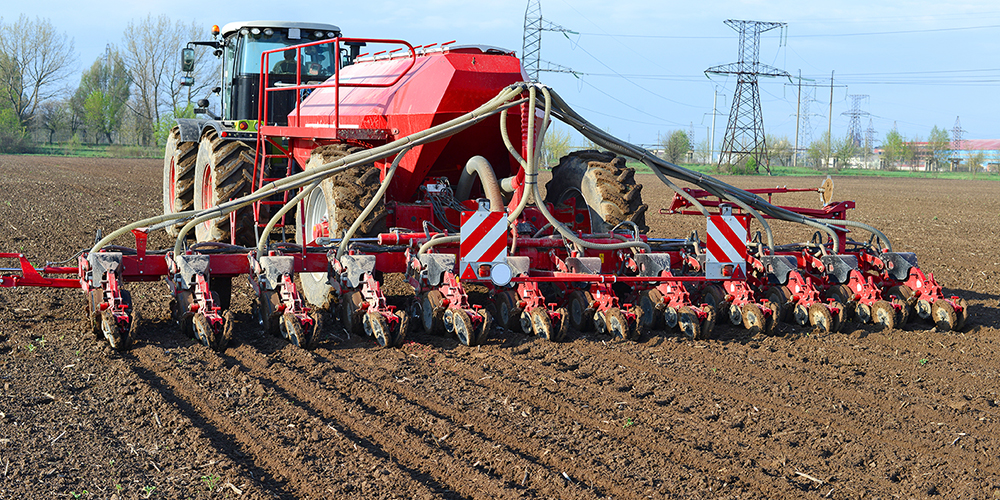Arable farming techniques
Cereal farming requires vast cultivable expanses, a significant labour force and appropriate tools. This method of farming is nonetheless similar to that of market gardening. Ploughing, sowing, fertilising, irrigating and treating are steps that have been followed for thousands of years to ensure an adequate yield and an abundant harvest. Arable farming in industrialised countries now relies on a variety of specialist mechanical devices.
The stages in cultivating cereals and tubers
From sowing to harvesting, intensive cereal farming follows a similar chain of events to market gardening, only on a larger scale. Current cereal crops are mostly grown in open fields, whereas tubers, such as potatoes, can also be grown in greenhouses. Both practices require a lot of space and tools, as well as a sizeable workforce. A feature of cereal farming is that it varies according to specific type of soil and way of farming each cereal needs.
The first stage in cereal and tuber cultivation is ploughing. This involves turning the soil over to aerate it, removing residue from former crops and digging furrows. With intensive farming, chemical fertilizers are then applied to the newly ploughed soil, whereas extensive farming relies on the soil’s natural resources and alternates crops on a yearly basis.
The second stage of intensive farming involves placing seeds in the furrows and covering them with earth and solid fertilizer. To accelerate plant growth, liquid fertiliser is applied as soon as the first shoots appear. The plants grow with regular watering or irrigation, using pipes on the ground, flooding the soil (in the case of rice), or with a system or sprinklers to imitate rainfall.
Pesticides are used to combat parasites and diseases which may affect the plants. However, the use of artificial pesticides pollutes the environment and may make pests more resistant. An alternative way of eliminating them is to use insects which prey on them. Agri-food development and modifications such as the use of genetically modified organisms (GMOs) have made some cereals more resistant. However, the validity of GMOs divides both the scientific community and the public arena.
A succession of farm machinery
Nowadays, the cultivation of cereals and other plants relies on the use of specific machinery for a suitable yield.
In industrialised countries, the agricultural crop cycle depends on the use of a succession of specialist mechanical equipment. The parade begins with the plough, which turns the earth over as it goes along, closely followed by the harrow, tilling the seedbed. Previously, a seed sower planted seeds at regular intervals. This has since been replaced by the modern planting machine. A raised bed cultivator attached to a tractor covers the seeds with earth. Next comes the sprayer to treat the crop with pesticides, as well as fertiliser spreaders or pulverisers for fine powder. Harvesting machines bring up the rear: combine harvesters for cereals, reapers for forage and lifters-leaf strippers-toppers for harvesting beetroot and other tubers.
CROCHET, Bernard, 2006. 150 ans de machinisme agricole. Paris : Éditions de Lodi. ISBN 9782846902656
MARTIN, Lucie, 2014. Premiers paysans des Alpes : alimentation végétale et agriculture au Néolithique. Rennes : Presses universitaires de Rennes. ISBN 9782753533813
MAZOYET, Marcel et ROUDART, Laurence, 2002. Histoire des agricultures du monde : du néolithique à la crise économique. Paris : Éditions Seuils. ISBN 9782020530613









